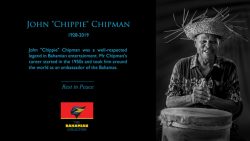This launch is the second denomination of notes re-leased into circulation by The Central Bank of The Bahamas under the Counterfeit Resist-ant Integrated Security Product (CRISP). “The decision to eventually replace the old banknotes with new ones is part of an ongoing exercise to enhance the security features of the banknotes, thereby providing greater protection against counterfeiting,” said Wendy Craig, The Central Bank’s governor.
CRISP notes are in part a response to the ease that technology allows for some counterfeiters to duplicate notes in circulation.
“This exercise is quite common world-wide and has increased in importance given the growing ease with which digital technology has facilitated these illicit activities,” Ms Craig added.
The CRISP $20 bills include a number of upgraded security features and easily identifiable aesthetic markers. There is a new watermark of Sir Milo Butler and the numeral 20 on the front and left hand side of the bill.
The windowed thread that runs the length of the front-side of the note near the centre is wider, and weaves in and out of the bill. The thread also changes colour when the note is tilted.
On the front left side and back right side of the note there is a new see-through feature showing a partial picture of a sand dollar.
A complete image of the sand dollar can be seen when the bill is held under a light source. The bill also has “optically variable ink with colour shifts” that show varying images of the numeral 20 and the sand dollar in different colours if the bill is tilted back and forth.
“Our objective is to ensure that the public is able to distinguish more easily and reliably genuine banknotes from counterfeits,” said Derek Rolle, deputy banking manager of The Central Bank.
“We intend to complement these public relations measures with seminars during the months of October and November,” he added.
The Central Bank stated in a press release that the new $20 Bahamian bill would circulate alongside the existing notes until those are declared unfit for circulation.
The face of political icon Sir Milo Butler will remain as the bill’s hallmark on the front, while a vignette of the Nassau Harbour remains on the back. Red, green and charcoal are also the main colours used on the bill.
The names of the islands of The Bahamas included on the front of the bill have been enlarged and the engravings on the note are deeper and thicker.
The CRISP $10 note was released in August 2005.
By: BARRY WILLIAMS, The Nassau Guardian



